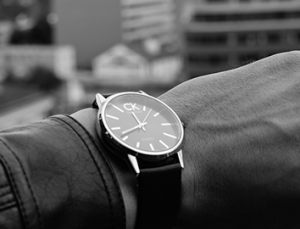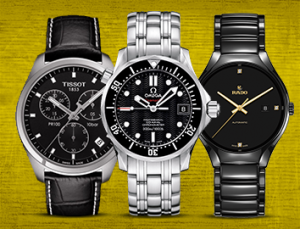So you must be a fanatic for watches, and you know every brand of watches available and have a collection of watches yourself. But do you know all the parts of the watch as it is? The prices of watches soar high due to the expensive nature of every individual part. Check if any of the names sound familiar to you.
Outer Parts of your watch
• CASE
The case of the watch is like a box that holds all the inner components of the watch in place. The material used for the casing depends on the style of the watch, but in majority of the cases, it has been stainless steel. In other cases, the casing could be of gold or platinum, depending on the price of the watch. In case of sports watches, it is usually plastic.
• LUGS
Lugs connect the case to the strap by means of metal spring bars.
• CROWN
The crown of the watch is used to adjust the time and date in your watch. The crown is usually pulled out to adjust the time. In expensive watches, there may be embellishments on the crown to indicate detailing.
• STRAP/BUCKLE
The strap and buckle together secure your watch to your wrist. The strap may be of various types ranging from leather, rubber, or metal straps. Other options for straps include nylon and satin. Nowadays, there is a popular trend running, where you can interchange the straps according to your moods and dresses.
• HANDS
The hands are usually divided into two – the hour hand and the minute hand. In the earlier versions, the second hand was also provided in the watches. The hands could either be plain or with slight embellishments depending on the cost of the watches.
• BEZEL
The bezel is that portion of the case that connects to the lugs. They may be plain in design or may be embellished with stones or other intricate detailing, which may vary with the price of the watches. The bezels of some watches have an added functionality that enables the wearer of the watch to switch between various time zones by rotating the bezel.
• CRYSTAL
The crystal is used to protect the inner components of the dial from external shock and dust. Although it is called crystal, it may be made from plastic or glass.
• DIAL
The dial is the face of the watch, and hence, the most expressive component of the watch. It is that portion under the crystal, which is embellished with numerals to indicate time.
Parts of Watch Movements
The following parts of a watch are responsible for the inner working mechanisms to help you tell time:
• BALANCE WHEEL
The balance wheel regulates time and is attached to another element called the hairspring. The balance wheel oscillates and divides time into equal segments as the hairspring coils, in order to maintain the accuracy of the watch. This is similar to the functioning of a pendulum in a wall clock.
• HAIRSPRING
The hairspring is responsible for the coiling and recoiling motion to set the balance wheel into oscillation.
• ESCAPEMENT
This component maintains the oscillations of the balance wheel.
• INCABLOC
A trademarked term referring to the shock-absorbing mechanism, this small piece is used in mechanical watches. The Incabloc prevents damage to sensitive parts during a fall.
• JEWEL
A jewel is a real ruby, or a synthetic gemstone, that reduces friction in the gear trains. This helps to maintain accurate timekeeping while greatly reducing the wear on parts, thus increasing the longevity of the watch itself.
• BASE PLATE
The main plate is the primary piece of metal that holds all the other parts of a movement together. Each part is mounted into the main plate.
• MAINSPRING
The mainspring is a coiled spring giving power to the gear train. This tightens and unwinds to create movement.
• REPEATER
A repeater is a complication that strikes like a gong. This can strike the hours, quarter hours and minutes using a gong. This complication is typically started using a button or slide on the case to activate.
• ROTOR
The rotor is the oscillating part of an automatic watch. This moving part winds the mainspring, which allows a watch to be wound automatically, rather than manually as the wearer moved.





